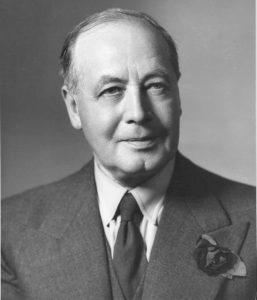Albert Jacobs
Mr Albertus Michiel Jacobs – CHAIRMAN OF ESCOM 1949 – 1952
EARLY YEARS
Albertus Michiel Jacobs was born at Graaff-Reinet in 1886. Before he had attained school-going age, the family moved to Cape Town where Albertus later attended South African College School (SACS) in Newlands.
ACADEMIC YEARS
Albertus progressed to the South African College, now known as the University of Cape Town. He completed a BA degree obtaining a distinction in the sciences. He wown the Jardine Bursary. While doing his MA he worked as laboratory assistant to Professor D P Hahn, a well-known scientist. Later he left for the Royal Tecchnical College in Germany, there to further his studies. Like so many of South Africa’s brightest scientist and engineers, he rounded off his studies in Germany, where he successfully completed a ocurse in electrical engineering at the Konigliche Technische Hochshule in 1911.
BUSINESS CAREER
The First World War found Jacobs working in Berlin for a company with world-wide mining interests. His company sent him to the copper mines of Chuquicamata in Chile and after that to New York as an assistant consultant engineer.
In 1919 he resigned and joined a technical commercial company. After a spell in Java he was transferred to Hong Kong as general manager.
It was not before 1923 that Jacobs returned to South Africa to visit his parents. He planned merely to visit his parents, but settled in the country of his birth after having met Dr H J van der Bijl, the Chairman of the newly founded ESCOM. Dr van der Bijl was aware of Jacobs’s abilities and offered him an appointment. He did not intend to stay in South Africa, until he met van der Bijl. Pointing to his own career, van der Bijl persuaded the young man – as he did many others – to reconsider his options. Van der Bijl was building an elite team to run the fledging ESCOM, and he was taken by Jacobs’s maturity and wide experience. Jacobs, for his part, was attracted to the technical content of the job. He, like the others, never regretted having his arm twisted in this most persuasive way.
INTRODUCTION TO ESCOM
Jacobs accepted Dr van der Bijl’s offer and started working for ESCOM as a technical officer. Albert Jacobs came to ESCOM in 1923 at the age of 37 after a career in commerce and industry. Two years later he was promoted to senior engineer and in 1927 became a member of the Commission.
In 1932 he also became the chief engineer. He made several trips to Europe with the purpose of purchasing equipment for ESCOM. He was also chairman of the South African Institute of Electrical Engineers.
Another of his many varied talents was a flair for languages. Apart from Afrikaans and English, he was also fluent in German, Spanish and Malay.
CHAIRMAN OF ESCOM
Dr Hendrik van der Bijl passed away in 1948. Insider Albert M Jacobs, ESCOM’s Chief Engineer and Commissioner since 1926, became van der Bijl’s successor as Chairman of ESCOM early in 1949. He was the logical choice, as he had taken over many of van der Bijl’s duties during the latter’s tenure as Director-General of War Supplies. Jacobs took charge of ESCOM just after it had taken over the VFP, making it one of the largest electrical utilities in the world.
Jacobs’s major contribution to ESCOM came when it was decided that four of the new power stations to be erected, namely Hex River, Swartkops, Vierfontein and Taaibos, would be designed and built by ESCOM’s own staff, most of whom had recently been transferred across from the VFP. Jacobs was personally responsible for the overall design and layout concepts. However, planning and designing power stations was one thing; financing them and procuring equipment for them would be quite another. The new chairman also set out to take ESCOM onto the world stage for its financial needs.
THE ELECTRICITY SUPPLY COMMISSION LOAN AGREEMENT ACT
During the second half of 1950, ESCOM started negotiations with the International Bank for Reconstruction and Development. The US$30 million loan from this bank provided for part of imported equipment for seven new power stations, the installation of additional capacity in existing power stations and for the construction of high-voltage transmission lines.
In order to ratify this loan agreement, Parliament passed the Electricity Supply Commission Loan Agreement Act in 1951. This Act addressed the question of government guarantees for ESCOM loans. The revised Electricity Act of 1958 included the provision that government would guarantee the repayment of any loan made to ESCOM.
In each of the three years after the first successful foreign loan, ESCOM raised funds abroad amounting to almost US$50 million from American markets and £2 million from sterling sources.
RETIREMENT
Albert Jacobs retired as Chairman of ESCOM in 1952. His successor was an old colleague, Dr J T Hattingh. Mr Jacobs died in 1963 at the age of 77 years.
BIBLIOGRAPHY
The sources of this material are A Symphony of Power – The Eskom Story, and Eskom: Golden Jubilee 1923 – 1973.





